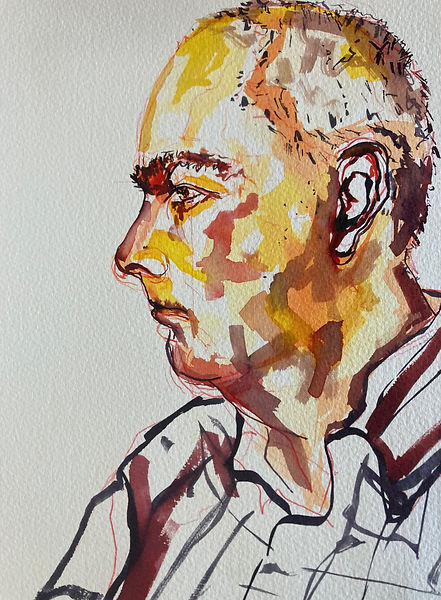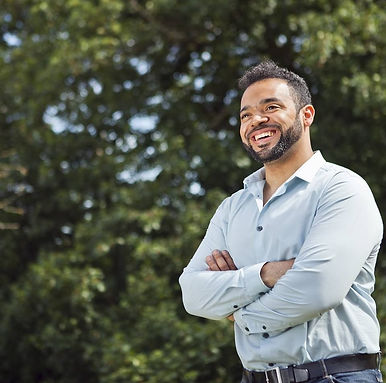
SURGE III is the third instalment of UAL's Post-Grad Community (PGC) and UCL's WEISS Centre collaborative programme that brings together scientists, artists and the public to explore the complexities and application of technology in surgery.
PGC and WEISS have commissioned three artist and researcher teams to work with patient groups to develop art and design-led solutions to technical healthcare.
Katy Emily Kelly (MA Fine Art: Painting, Camberwell College of Arts) was paired with Robert Stafford Williams (PhD in Medical Physics, UCL). Together, the project links their two practices by exploring Lung Cancer (LC) and Cardiovascular Disease (CVD) through sound, pattern and portraits.


Kate Kelly in collaboration with Robert Stafford-Williams the Wellcome/EPSRC Centre for Surgical and Interventional Science (WEISS) at University College London (UCL), The University of the Arts London Post Graduate Community, The British Heart Foundation, ALK Positive and a group of people affected by Condition. CC BY-SA 4.0”
This project reflects a collaboration between WEISS (The Welcome EPSRC Centre for Surgical and Interventional and Surgical Sciences) at UCL (University College London), UAL (University of the Arts), London, Robert Stafford Williams (PhD Medical Physics, UCL), British Heart Foundation and ALK Positive, and me - Kate Kelly.
I was paired with Robert Stafford Williams. Together we explored the themes of patterns and portraits through the visual language of ultrasound waves. Robert and I had a keen interest in working together as our connection came through issues concerning women and ethnic minorities and the implications that race and gender has on the type of treatment and care you can receive.
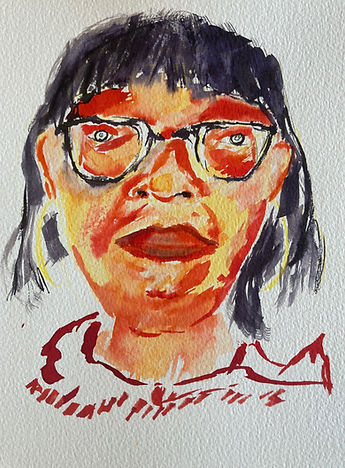

Background
Robert’s research involves using miniature ultrasound devices that use half a millimetre-wide fibres. He uses these devices to navigate them into the smallest parts of the body. The two major application areas are the cardiovascular system looking for damage and being able to navigate down the airways of the lung to be able to image lymph nodes and try to pick up things, particularly from peripheral cancer disease. Within Robert’s research, he is not only interested in technology and engineering but also in understanding people’s relationships with medical devices and with their experiences of medical technology. He is interested in the practical development of medical technology but also in making sure that it is worthwhile and that it won’t strike fear or make people hesitant to go and get scans. Therefore, for Robert, the technology he creates needs to be responsive to the person.



Exploring Roberts research led us to work with different charities, to reflect the two strands of his research: lung cancer and heart disease. In response we ran two workshops, one with the British Heart Foundation and the other with ALK Positive.
We choose to work with the charity ALK Positive as this organisation works with a specific rare form of lung cancer that disproportionality affects women and people of Asian ethnicity. (ALK Positive Lung Cancer UK, 2023). ALK-positive lung cancer is a relatively rare form of lung cancer caused by the abnormal rearrangement of the anaplastic lymphoma kinase gene. The vast majority of patients are non-smokers, half are under 50 years of age when diagnosed (some are much younger), and the majority are female. Most patients are diagnosed at Stage 4.
Heart disease is often considered more of a man’s disease and breast cancer is considered female. Despite this heart disease is a bigger risk to women’s health as more women die from heart attacks than breast cancer each year’ (Whitaker, P. P109).
The project’s main aims will be to take a humanistic approach to the research, linking our two practices while exploring concepts using sound, pattern, and portraits. This will be done through informal conversations during the workshops. We aim to talk openly people affected directly and indirectly by lung cancer (LC) and cardinal vascular disease (CVD).
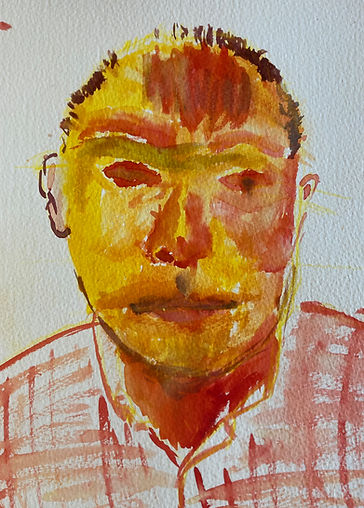
Pattern and Portrait Workshop
Working collaboratively with British Heart Foundation and ALK Positive we ran two separate workshops.
We were keen to create a space for experimenting using Brusho and coloured pencil, where painting and drawing could lead to open conversations regarding medical care and personal experiences. Participants were asked to create abstracted paintings based on ultrasound images with a restricted colour to be reflective of the colour schemes of Roberts's data collection. While creating abstract paintings of ultrasound waves, participants reflected on their experiences of being photographed by an ultrasound machine. The participants spoke about the sensation of watching doctors take their images/pictures and them having limited understanding of why the images where being taken and what was seen. They spoke about feeling alienated and claustrophobic during the diagnostic imaging procedures.
Participants were asked before the session to send in photographs of themselves to be used within the session. These images were then given out within the group so that different people held images of strangers. This way, barriers would be broken down to give way to meaningful discussions and shared experience. For example, during one of the sessions a participant spoke openly and was well received speaking about how before they were diagnosed their pain and symptoms were not believed by medical professionals.
To show how health conditions such as lung cancer and cardiovascular disease can cause deep complexities in people’s lives, I decided to focus on artistic techniques including layering and obscuring to reflect how people feel. By layering with paint and coloured pencil to create our images, we can partially anonymise the people involved, while still telling their stories with their own creations.

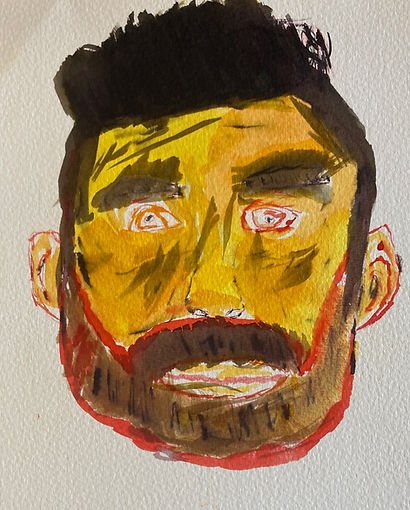
During a session one participants spoke about how their tumour was described as ‘unremarkable’ and how it being unremarkable was a positive thing. They described how some of the language used when receiving information about their medical conditions can be confusing. I found the word unremarkable has stuck with me, as there was nothing unremarkable about the people, I’ve collaborated with during these sessions.

